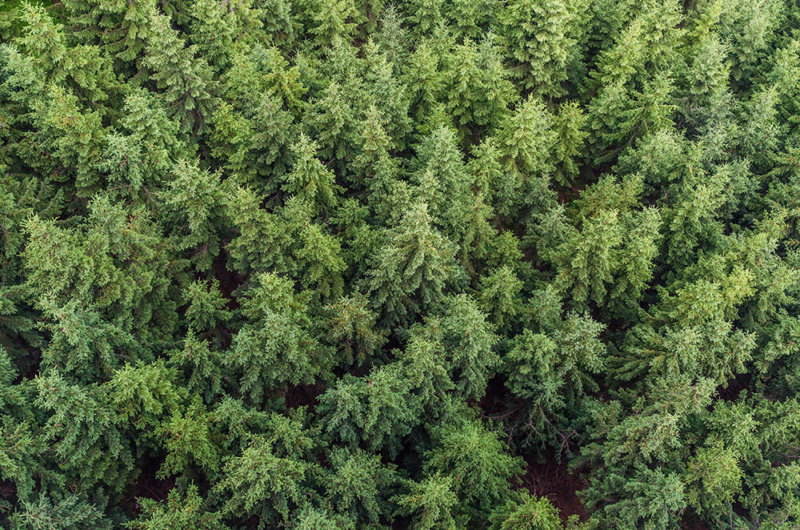Old forests on our landscape
In our altered modern landscape, the idea of an old growth forest is captivating; we picture primal, untouched wilderness, massive trees and forests full of life. But what is “old growth,” and what role should it play on our modern landscape?
Depending on who you ask, “old growth” means different things. Some say that old growth forests are “primary” or “original” forests; forests which have never been extensively altered or managed by humans (or, alternately, by European-descended humans). Others say a forest becomes “old growth” when it has avoided significant disturbance or human management for a long time – often at least 150 years. A third definition is that a forest becomes “old growth” when it is old and has achieved a certain advanced stage in forest development; what foresters call “late-successional forests.”

Forests are dynamic, forever changing. As they change they (usually) pass through a predictable series of developmental stages. Each stage “succeeds” the last, and so we call this process “succession.” Changes in the forest are driven by tree mortality; while old growth forests have generally avoided catastrophic disturbances for a long time, they are defined by constant small-scale disturbances which kill small numbers of trees. As a result, they often look “messy,” with some big trees but also trees of all different sizes and ages. Dead-standing and fallen trees are everywhere and the forest floor is punctuated by “pits and mounds” created by the upturned root systems of trees which have succumbed to windthrow.
What most people call “messiness,” foresters and ecologists call “complexity.” Forests tend to become more complex as they age, and so old growth forests are generally much more complex than the young (60 to 100-year-old) forests that now cover Vermont’s landscape. With complexity comes many benefits; from a rich variety of habitats for wildlife and other organisms to the qualities of resilience and adaptability, which allow forests to stay healthy amidst great stress and change and to adapt to novel conditions, such as the pervasive effects of climate change.
Prior to European colonization, it is estimated that 55-60% of New England’s forests were older than 150 years. Most forests in New England (as much as 80%) were cleared in the early-mid 1800’s, some converted into agricultural land and maintained as such for a century or more. Today only about 0.4% of New England’s forests are older than 150 years. In Vermont, only about 1,000 acres of old growth forest remains, mostly small fragments spread across the State.
Old growth forests are unique and incredibly important; they are repositories of biodiversity and powerful demonstrations of the way that forests grow and develop when left unmanaged. I would argue that they are also intrinsically important, valuable independent of their value to us. However, at the same time that we revere old growth, we also need to de-mythologize it.
First, we need to remember that forest succession is a cycle; every old growth forest was once a young forest and will be one again. While younger forests are not as charismatic as old growth, forests of all ages are natural and valuable, providing unique habitats and ecological functions. Old growth is so important because older forests, and their unique qualities, are relatively underrepresented across our landscape. While we can’t create old growth, many of us in the ecological forestry community have been working to make young forests “old-growthier,” actively managing forests to create old growth attributes sooner than they would naturally occur.
As we navigate our complex world, we need to balance many different objectives and realities. Our “landscape” is more than just forests; we belong to a cultural landscape, a historical landscape, a landscape that includes people in a way that it didn’t a few centuries ago when old growth forests dominated Vermont. Humans will always consume resources and those resources will always have costs to ecosystems; the question is not if we want to have an impact, but rather what we want our impact to be. Managing forests locally, and using local renewable resources in general, may give us more control over the impacts of our lives on ecosystems and peoples across the globe.
Charting a path forward will be as nuanced and as complex as our forests. It will involve creativity and compromises, like simultaneously recognizing that both old growth forests and managing forests can be part of how we build a better world.
Ethan Tapper is the Chittenden County Forester. He can be reached by email or by phone at (802) 585-9099.

